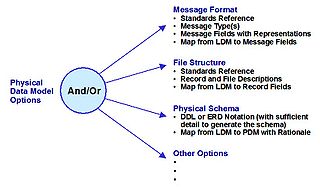External links
- Using Virtual Private Database to Implement Application Security Policies
- http://www.oracle-base.com/articles/8i/VirtualPrivateDatabases.php
A virtual private database or VPD masks data in a larger database so that only a subset of the data appears to exist, without actually segregating data into different tables, schemas or databases. A typical application is constraining sites, departments, individuals, etc. to operate only on their own records and at the same time allowing more privileged users and operations (e.g. reports, data warehousing, etc.) to access on the whole table.
The term is typical of the Oracle DBMS, where the implementation is very general: tables can be associated to SQL functions, which return a predicate as a SQL expression. Whenever a query is executed, the relevant predicates for the involved tables are transparently collected and used to filter rows. SELECT, INSERT, UPDATE and DELETE can have different rules.

In computing, a database is an organized collection of data stored and accessed electronically from a computer system. Where databases are more complex they are often developed using formal design and modeling techniques.
A relational database is a digital database based on the relational model of data, as proposed by E. F. Codd in 1970. A software system used to maintain relational databases is a relational database management system (RDBMS). Many relational database systems have an option of using the SQL for querying and maintaining the database.
SQL is a domain-specific language used in programming and designed for managing data held in a relational database management system (RDBMS), or for stream processing in a relational data stream management system (RDSMS). It is particularly useful in handling structured data, i.e. data incorporating relations among entities and variables.
TimesTen is an in-memory, relational database management system with persistence and recoverability. Originally designed and implemented at Hewlett-Packard labs in Palo Alto, California, TimesTen spun out into a separate startup in 1996 and was acquired by Oracle Corporation in 2005.
A data dictionary, or metadata repository, as defined in the IBM Dictionary of Computing, is a "centralized repository of information about data such as meaning, relationships to other data, origin, usage, and format". Oracle defines it as a collection of tables with metadata. The term can have one of several closely related meanings pertaining to databases and database management systems (DBMS):
A join clause in SQL – corresponding to a join operation in relational algebra – combines columns from one or more tables into a new table. ANSI-standard SQL specifies five types of JOIN: INNER, LEFT OUTER, RIGHT OUTER, FULL OUTER and CROSS.
The SQL SELECT statement returns a result set of records, from one or more tables.

A physical data model is a representation of a data design as implemented, or intended to be implemented, in a database management system. In the lifecycle of a project it typically derives from a logical data model, though it may be reverse-engineered from a given database implementation. A complete physical data model will include all the database artifacts required to create relationships between tables or to achieve performance goals, such as indexes, constraint definitions, linking tables, partitioned tables or clusters. Analysts can usually use a physical data model to calculate storage estimates; it may include specific storage allocation details for a given database system.
The following tables compare general and technical information for a number of relational database management systems. Please see the individual products' articles for further information. Unless otherwise specified in footnotes, comparisons are based on the stable versions without any add-ons, extensions or external programs.
In a database, a view is the result set of a stored query on the data, which the database users can query just as they would in a persistent database collection object. This pre-established query command is kept in the database dictionary. Unlike ordinary base tables in a relational database, a view does not form part of the physical schema: as a result set, it is a virtual table computed or collated dynamically from data in the database when access to that view is requested. Changes applied to the data in a relevant underlying table are reflected in the data shown in subsequent invocations of the view. In some NoSQL databases, views are the only way to query data.

Null or NULL is a special marker used in Structured Query Language to indicate that a data value does not exist in the database. Introduced by the creator of the relational database model, E. F. Codd, SQL Null serves to fulfil the requirement that all true relational database management systems (RDMS) support a representation of "missing information and inapplicable information". Codd also introduced the use of the lowercase Greek omega (ω) symbol to represent Null in database theory. In SQL, NULL is a reserved word used to identify this marker.
In computer science, a database cursor is a mechanism that enables traversal over the records in a database. Cursors facilitate subsequent processing in conjunction with the traversal, such as retrieval, addition and removal of database records. The database cursor characteristic of traversal makes cursors akin to the programming language concept of iterator.
In computing, a materialized view is a database object that contains the results of a query. For example, it may be a local copy of data located remotely, or may be a subset of the rows and/or columns of a table or join result, or may be a summary using an aggregate function.
A NoSQL database provides a mechanism for storage and retrieval of data that is modeled in means other than the tabular relations used in relational databases. Such databases have existed since the late 1960s, but the name "NoSQL" was only coined in the early 21st century, triggered by the needs of Web 2.0 companies. NoSQL databases are increasingly used in big data and real-time web applications. NoSQL systems are also sometimes called "Not only SQL" to emphasize that they may support SQL-like query languages or sit alongside SQL databases in polyglot-persistent architectures.

A database application is a computer program whose primary purpose is retrieving information from a computerized database. From here, information can be inserted, modified or deleted which is subsequently conveyed back into the database. Early examples of database applications were accounting systems and airline reservations systems, such as SABRE, developed starting in 1957.
In database management systems (DBMS), a prepared statement or parameterized statement is a feature used to execute the same or similar database statements repeatedly with high efficiency. Typically used with SQL statements such as queries or updates, the prepared statement takes the form of a template into which certain constant values are substituted during each execution.
A cloud database is a database that typically runs on a cloud computing platform and access to the database is provided as-a-service. There are two common deployment models: users can run databases on the cloud independently, using a virtual machine image, or they can purchase access to a database service, maintained by a cloud database provider. Of the databases available on the cloud, some are SQL-based and some use a NoSQL data model.
PL/SQL is Oracle Corporation's procedural extension for SQL and the Oracle relational database. PL/SQL is available in Oracle Database, Times Ten in-memory database, and IBM DB 2. Oracle Corporation usually extends PL/SQL functionality with each successive release of the Oracle Database.
SQL:2011 or ISO/IEC 9075:2011 is the seventh revision of the ISO (1987) and ANSI (1986) standard for the SQL database query language. It was formally adopted in December 2011. The standard consists of 9 parts which are described in detail in SQL. The next version is SQL:2016.

Oracle NoSQL Database (ONDB) is a NoSQL-type distributed key-value database from Oracle Corporation. It provides transactional semantics for data manipulation, horizontal scalability, and simple administration and monitoring.